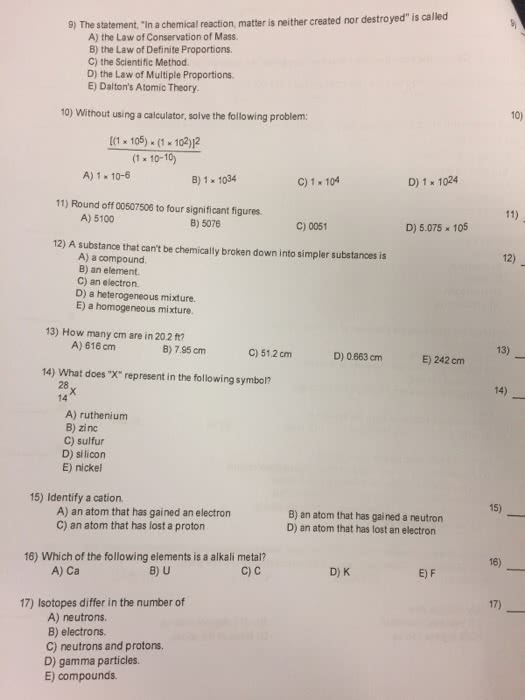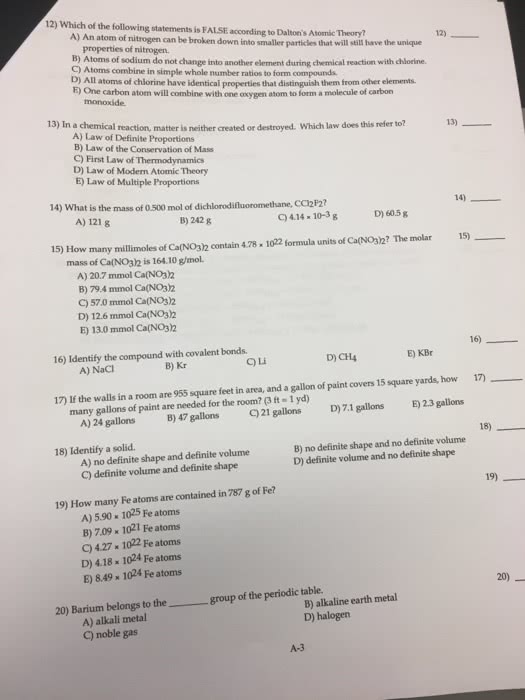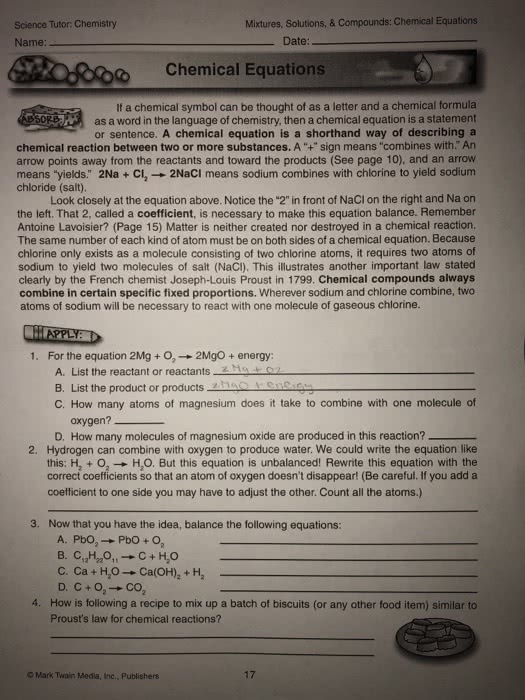CHEM101 Lecture Notes - Lecture 1: Beta Particle, Mass, Alpha Particle

CHEM 101 Saylor M
Lec. #1 Fall 2017
ATOMIC THEORY
Chemistry: is the study of matter (elements, compounds, mixtures)
elements: simplest type of substance, unique physical / chemical properties; consists of only
one type of atom (H, O, S, Zn, etc.)
compound: a substance that is composed of 2+ elements that are chemically combined in fixed proportions
mixture: a group of 2+ elements and / or compounds that are physically intermingled
MASS LAWS
1. Law of Conservation of Mass (Lavoisier 1789)
mass (matter) is neither created / destroyed, total mass does not change during a chemical reaction
2. Law of Definite Proportions (Proust 1799)
A given compound always contains the same proportion of elements by mass
3. Law of Multiple Proportions
Two elements can combine to form different compounds and the ratio of elements can be reduced to small
whole numbers
DALTON’S ATOMIC THEORY
1. All matter consists of atoms (tiny indivisible particles that cannot be created / destroyed)
but every atom has a substructure (electrons, protons etc)
2. Reactions involve reorganization of the atoms and change the way they are bound together (atoms of one
element cannot be converted into atoms of another)
but in nuclear reactions, atoms change
3. Atoms of an element are identical in mass / properties
but what about isotopes?
4. Compounds result from the chemical combinations of a specific ration of atoms of different elements
RUTHERFORD ATOMIC MODEL
Radioactivity: when small particle (,) and / or electromagnetic radiation ( rays) are emitted by unstable nuclei
alpha particle (): carries 2 positive charges and has essentially the same mass as a helium atom = He2+
beta particle (): negatively charged particle with same properties as the electron
gamma rays (): electromagnetic radiation of high penetrating power
PLUM PUDDING MODEL proposed by J.J. Thompson
positive charge is needed to counterbalance the negative electrons
electrons are embedded in the positive atom like “raisins in
find more resources at oneclass.com
find more resources at oneclass.com

77
CHEM101 Full Course Notes
Verified Note
77 documents
Document Summary
Law of conservation of mass (lavoisier 1789) mass (matter) is neither created / destroyed, total mass does not change during a chemical reaction. A given compound always contains the same proportion of elements by mass. Two elements can combine to form different compounds and the ratio of elements can be reduced to small whole numbers. Dalton"s atomic theory: all matter consists of atoms (tiny indivisible particles that cannot be created / destroyed) But every atom has a substructure (electrons, protons etc: reactions involve reorganization of the atoms and change the way they are bound together (atoms of one element cannot be converted into atoms of another) But in nuclear reactions, atoms change: atoms of an element are identical in mass / properties. But what about isotopes: compounds result from the chemical combinations of a specific ration of atoms of different elements. Plum pudding model proposed by j. j. thompson positive charge is needed to counterbalance the negative electrons.





